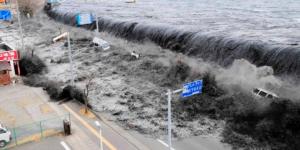What Are Clouds and How Do They Form?


Clouds have long been a source of fascination for humans. Their ever-changing shapes and patterns have inspired artists, poets, and scientists for centuries. But beyond their aesthetic appeal, clouds play a crucial role in regulating Earth's climate. Clouds are complex and dynamic systems, and accurately predicting their formation and movement is essential for weather forecasting. Understanding cloud formation helps us predict precipitation patterns, storm development, and visibility conditions.
In this article by thedailyECO, we explain how do clouds form, as well as exploring their formation, diverse types, and significance in Earth's climate system.
What are clouds?
The Earth's surface is predominantly covered by water, constituting 70% of its composition, distributed across seas, rivers, lakes, and ponds. However, a noteworthy portion of this water is consistently present in the form of clouds, playing a vital role in the well-known water cycle.
Clouds, referred to as hydrometeors, are complex atmospheric phenomena composed of water droplets, water crystals, or a combination of both. Their existence is integral to life on Earth, essentially underlining the profound importance of water. These cloud formations remain suspended in the atmosphere, and their intricate creation, as we will delve into later, is contingent upon the condensation of water vapor levels in the sky.
How do clouds form step by step?
Cloud formation is a fascinating process that unfolds in several distinct steps. Here's a step-by-step breakdown of how clouds form:
- Water vapor: the foundation of cloud formation lies in the presence of water vapor in the atmosphere. This invisible gas, primarily derived from evaporation from seas, oceans, rivers, and lakes, is fueled by the Sun's radiant energy. Plants also contribute to this process by releasing water vapor during their transpiration process.
- Condensation nuclei: these tiny specks, also known as condensation nuclei, act as the building blocks of clouds. They provide surfaces for water vapor molecules to congregate and condense. These nuclei can be microscopic dust particles, pollen grains, salt crystals from sea spray, or even volcanic ash.
- Cooling temperatures: the final step in cloud formation requires a slight drop in temperature. As warm, humid air rises due to convection currents, it encounters cooler air at higher altitudes. This cooling disrupts the energy balance of water vapor molecules, causing them to lose energy and adhere to condensation nuclei. These tiny water droplets, initially invisible to the naked eye, gradually coalesce and grow into visible clouds.
The formation of clouds can vary depending on the specific atmospheric conditions. For instance, when warm, moist air encounters mountain slopes, it rises rapidly and cools quickly, leading to condensation and cloud formation. This explains why clouds are often observed in mountainous regions.

Why do clouds float?
The seemingly effortless drift of clouds across the sky may appear contradictory to our understanding of gravity's relentless force. However, this captivating phenomenon is not an anomaly but a result of the delicate interplay between two crucial factors.
Clouds consist of tiny water droplets, each individually influenced by gravity's downward pull. Nevertheless, the overall weight of these droplets is significantly outweighed by the immense volume of air enveloping them. In other words, this air serves as an invisible cushion, generating a counteracting force that balances the droplets' weight, preventing them from falling to the ground.
Nonetheless, the primary mechanism sustaining clouds' airborne presence is the existence of ascending warm air currents. Fueled by the processes contributing to cloud formation – evaporation, condensation nuclei, and cooling – these currents generate a buoyant force that overcomes gravity's downward pull. Comparable to invisible escalators, these upward currents continuously lift the clouds, thwarting their descent due to gravity.
What are the main types of clouds?
Clouds are classified into several main types based on their appearance and altitude in the Earth's atmosphere. The primary cloud types are:
Cumulus clouds
Cumulus clouds, the quintessential cloud formations, manifest as plump, heaped structures, resembling cotton balls or cauliflower florets. These cheerful-looking clouds, often referred to as "fair weather clouds," are primarily associated with sunny days and rising air currents. Their formation is triggered by convection, the upward movement of warm, humid air.
As buoyant air ascends, it cools, and the water vapor it carries condenses into tiny water droplets. These droplets, initially invisible to the naked eye, gradually coalesce into visible clouds, forming the familiar puffy shapes of cumulus clouds.
Stratus clouds
Stratus clouds, in contrast to the defined shapes of cumulus clouds, appear as a continuous, grayish sheet that blankets the sky. They are formed by horizontal layers of air, typically at lower altitudes, between 2,000 and 6,000 meters (6,562 and 19,685 feet).
Stratus clouds are often associated with overcast skies and precipitation, as they are more susceptible to the formation of raindrops. These clouds, with their low-level presence, can obscure the sun and contribute to the formation of fog or drizzle.
Cirrus clouds
Cirrus clouds stand out for their delicate, feathery appearance. These clouds, composed primarily of ice crystals, form at altitudes exceeding 7,500 meters (24,600 feet), where the air is extremely cold.
Their wispy, elongated forms, often resembling hair or feathers, are a testament to the high altitudes at which they reside. Cirrus clouds, with their delicate structure, are often seen as harbingers of fair weather, as they typically precede warm fronts and the dissipating of other cloud types.
Intermediate types of clouds
While the three primary cloud types – cumulus, stratus, and cirrus – set the foundation for cloud classification, intermediate types emerge from the blending of these characteristics. Let us take a look at some of them:
Cirrostratus clouds
- Appearance: thin, wispy sheets covering the sky.
- Indication: Cirrostratus clouds often precede or accompany precipitation, and they can create a halo effect around the sun or moon.
Stratocumulus clouds
- Appearance: lumpy, gray clouds forming a layer.
- Indication: Stratocumulus clouds can suggest unsettled weather with scattered showers or drizzle, but they typically don't lead to heavy precipitation.
Explore more about the formation and characteristics of stratocumulus clouds in our comprehensive guide.
Cumulonimbus clouds
- Appearance: towering clouds with a dark, cauliflower-like shape.
- Indication: cumulonimbus clouds are powerful and often associated with thunderstorms. They are capable of producing heavy rain, thunder, lightning, and even severe weather phenomena like tornadoes.
Dive deeper into the world of cumulonimbus clouds in our in-depth article.
Nimbostratus clouds
- Appearance: continuous, gray sheets covering the sky.
- Indication: Nimbostratus clouds are rain-laden and can produce steady, drizzly rain or snowfall. They are associated with overcast skies and prolonged precipitation, and their presence can lead to the development of fog or drizzle.
How are clouds classified by altitude?
Clouds can also be differentiated based on their altitude in the Earth's atmosphere. The altitude at which clouds form and the characteristics they exhibit are essential factors in classifying them into various cloud types. Different altitudes represent different atmospheric conditions, and this classification helps meteorologists understand and interpret the weather. Let's take a quick look at how they are classified.
High clouds
Originating between 7 km (23,000 feet) and 13 km (42,000 feet) in the atmosphere, high clouds, including cirrus, cirrocumulus, or cirrostratus clouds, do not precipitate but may signal impending weather changes.
Medium clouds
Forming between 3 km (10,000 feet) and 6 km (20,000 feet), medium clouds neither cause precipitation nor completely cover the sky. They exhibit a uniform appearance.
Low clouds
Found below 3 km (10,000 feet), low clouds may bring precipitation if at very low altitudes. Strata, cumulus, and cumulonimbus clouds fall into this category, characterized by a cottony appearance.
Amazed by the transformative power of water vapor, the source of cloud formation? Discover how it culminates in the breathtaking spectacle of cloud seas in our fascinating piece.
What is the importance of clouds?
While clouds may appear as fleeting wisps of vapor, their role in regulating Earth's climate and shaping weather patterns is profound. Beyond their aesthetic appeal, clouds are integral components of our planet's delicate balance.
Functioning as a crucial buffer against extreme temperature fluctuations, clouds act as a thermostat for our planet. Their interaction with incoming solar radiation includes reflecting it away from the Earth (cooling effect) or trapping some near the surface (warming effect), with the overall impact dependent on the type of cloud and its altitude.
Clouds serve as the lifeblood of the water cycle, facilitating the movement of water between the Earth's surface and the atmosphere. They provide condensation nuclei for water vapor, enabling the formation of precipitation such as rain, snow, and hail. This precipitation replenishes water resources, nourishes plants, and sustains freshwater lakes and oceans.
Finally, clouds actively shape weather patterns. Their presence or absence can influence wind patterns, temperature gradients, and the distribution of precipitation. In essence, clouds are dynamic actors in the intricate dance of Earth's atmospheric processes, contributing significantly to the overall functioning of our planet's climate system.
If you want to read similar articles to What Are Clouds and How Do They Form?, we recommend you visit our Meteorological phenomena category.






